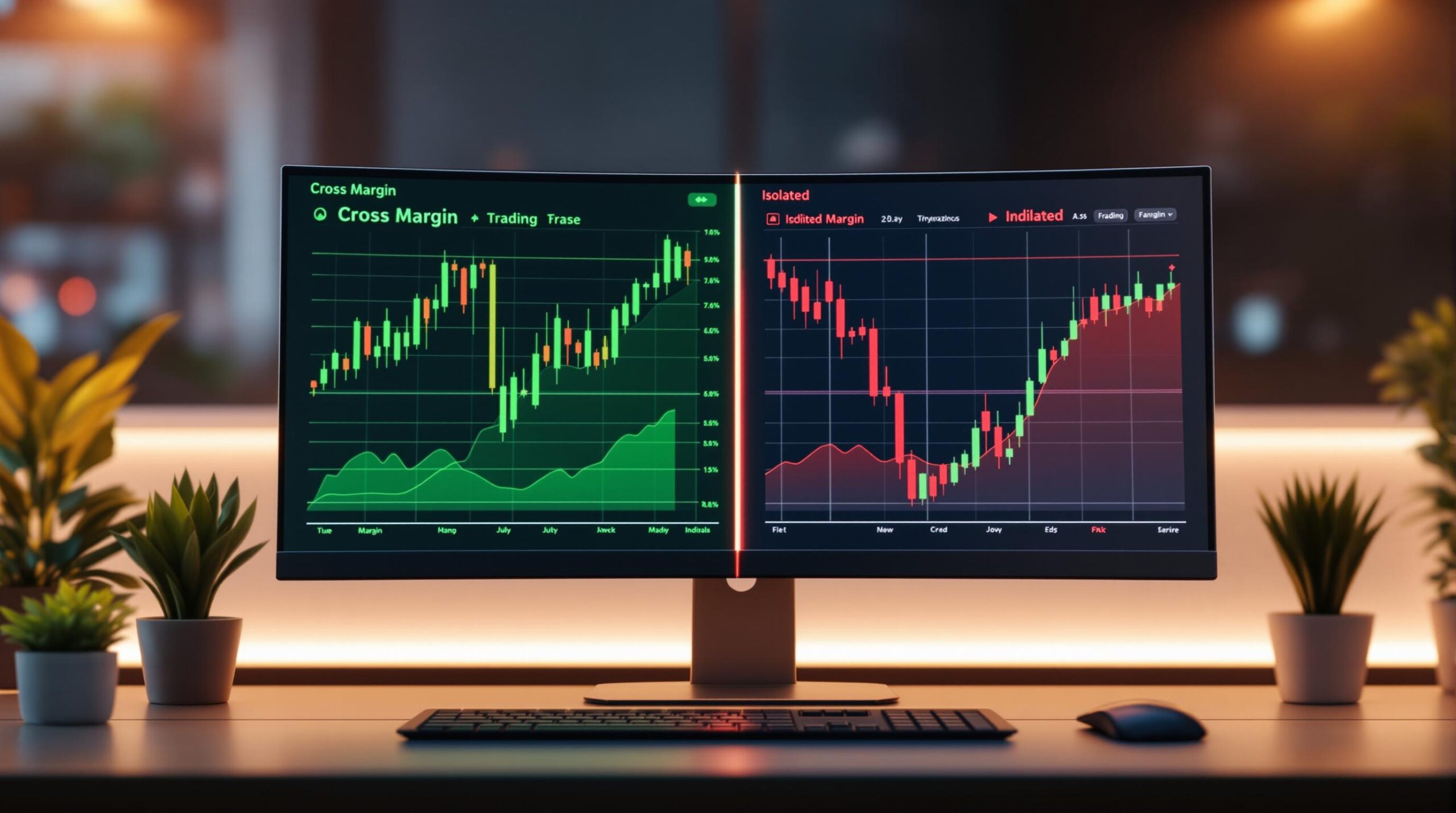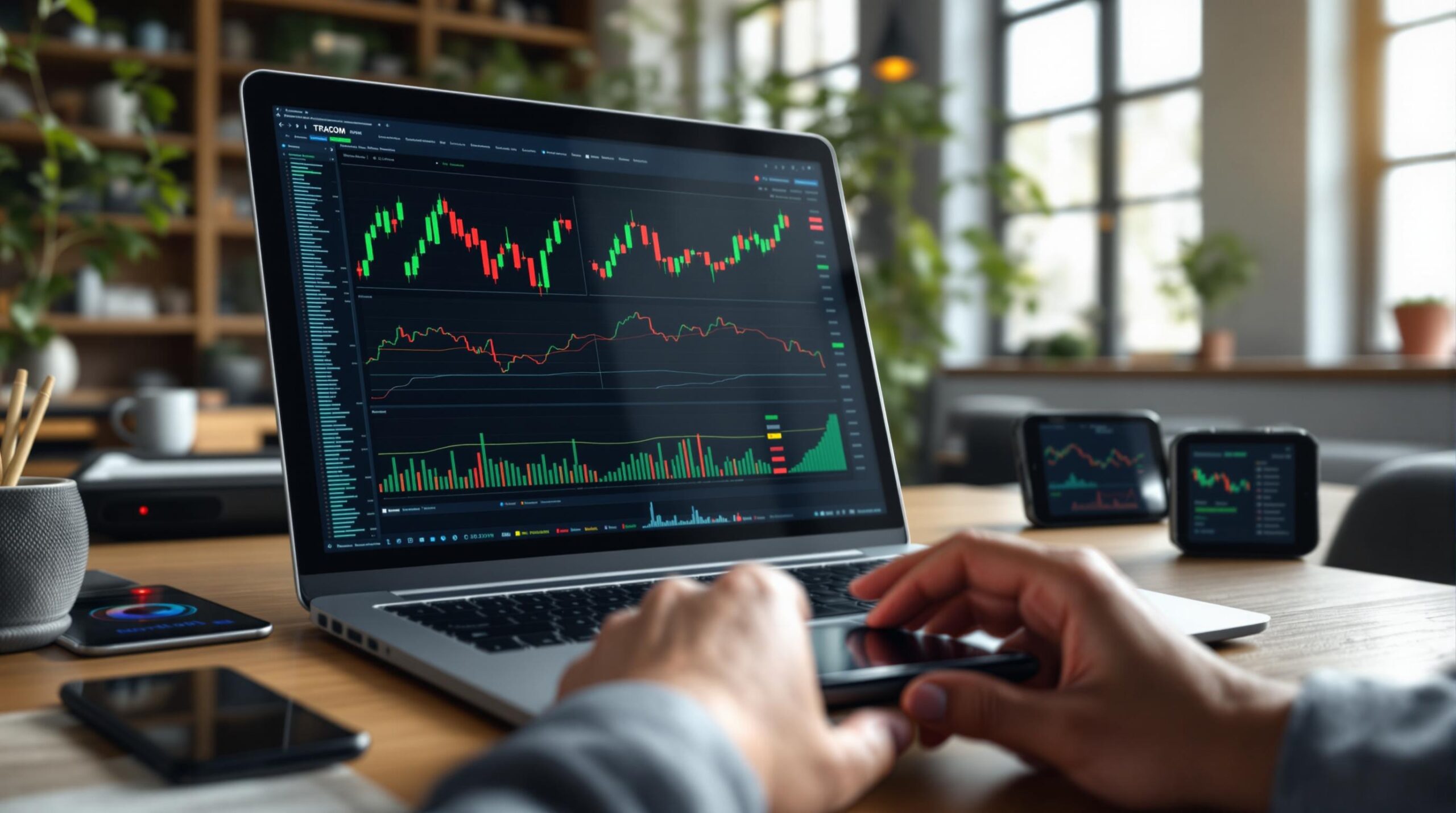Liquidation happens when a leveraged trade becomes unsustainable due to price drops, forcing platforms to close positions automatically to prevent further losses. The higher the leverage, the closer the liquidation price is to your entry point, making small price movements riskier.
Key Points:
- Factors Affecting Liquidation Price: Leverage ratio, initial margin, entry price, and maintenance margin.
- Platform Differences:
- Ethereum DEXs: Gradual liquidations, higher gas fees.
- Solana DEXs: Faster liquidations, lower fees.
- Risk Management Tips:
- Use stop-loss and trailing stop orders.
- Maintain a margin buffer above the liquidation price.
- Opt for lower leverage to reduce risk.
Quick Comparison: Ethereum vs. Solana DEX Liquidations
| Feature | Ethereum DEXs | Solana DEXs |
|---|---|---|
| Execution Speed | 30-60 seconds | 1-2 seconds |
| Gas Fees | Higher | Lower |
| Leverage Limits | Up to 20x | Up to 50x |
| Liquidation Method | Gradual | Immediate |
Crypto Liquidations Explained: What They Are and How to Avoid Them
Calculating Liquidation Prices
Knowing how liquidation prices are calculated is essential for managing risks in leveraged trading. These calculations rely on several factors that determine when a platform will automatically close your position.
Key Factors in Liquidation Price Calculation
Three main elements influence liquidation price:
- Initial Margin: The capital you deposit to open a position.
- Leverage Ratio: The multiplier that increases both potential profits and losses.
- Maintenance Margin: The minimum amount needed to keep your position active.
These factors work together to establish how close your liquidation price is to your entry price. For instance, trading with higher leverage – like the 50x leverage available on platforms such as Defx – brings your liquidation price much closer to your entry price, reducing the buffer for market fluctuations.
How Liquidation Prices Are Calculated
Liquidation prices are based on a mix of leverage, entry price, and maintenance margin requirements. The calculation typically considers:
- Entry Price
- Position Size
- Leverage Applied
- Maintenance Margin
For example, if you hold a $10,000 position with 10x leverage at an entry price of $1,000, a 10% price drop to $900 could lead to liquidation [4]. This underscores the importance of carefully managing both leverage and position size.
If your platform enforces a 10% maintenance margin, your position will be liquidated once your equity dips below that threshold.
Differences Across DEX Platforms
Decentralized exchanges (DEXs) handle liquidations differently depending on the blockchain they operate on:
| Platform Type | Liquidation Approach | Key Characteristics |
|---|---|---|
| Ethereum DEXs | Gradual liquidation | Higher gas fees, slower execution |
| Solana DEXs | Rapid liquidation | Faster execution, lower fees |
For example, Solana-based platforms like Defx execute liquidations faster thanks to the blockchain’s speed. However, this also means traders must monitor their positions closely, as rapid market changes can trigger liquidations more quickly than on Ethereum-based platforms.
Understanding these platform-specific nuances can help you better manage your positions, which we’ll delve into further in the next section.
How DEX Platforms Handle Liquidation
Decentralized exchanges (DEXs) manage liquidations in various ways, with notable differences between Ethereum and Solana-based platforms. Knowing these distinctions helps traders better manage their positions and reduce risks.
Ethereum DEX Liquidation Systems
Ethereum-based platforms, such as dYdX, use smart contracts to automate liquidations. These systems ensure security through multiple confirmation steps, triggering liquidations when a position’s value falls below the maintenance margin. For instance, dYdX automatically closes positions that breach predefined thresholds using its smart contract system [5].
Key features of Ethereum DEX liquidations include:
- Automated liquidations managed by smart contracts.
- Support for cross-margin trading, with platforms like ApeX Pro offering leverage up to 20x.
Solana DEX Liquidation Systems
Solana-based platforms, like Defx, prioritize speed and cost-efficiency. Thanks to Solana’s fast transaction processing, liquidations are executed in just seconds, with lower fees compared to Ethereum.
Key features of Solana DEX liquidations include:
- Near-instant liquidation processing.
- Lower transaction fees due to Solana’s efficient infrastructure.
- Advanced order matching systems for quick and efficient position closures.
DEX Platform Comparison
Here’s a quick look at how Ethereum and Solana DEXs handle liquidations:
| Feature | Ethereum DEXs | Solana DEXs |
|---|---|---|
| Execution Speed | 30-60 seconds | 1-2 seconds |
| Gas Fees | 0.02-0.05% + network fees | 0.01-0.02% flat fee |
| Leverage Limits | Up to 20x (dYdX) | Up to 50x (Defx) |
| Liquidation Method | Gradual with confirmations | Immediate execution |
For example, Mango Markets, a Solana-based DEX, highlights the blockchain’s speed and cost advantages, making it attractive to high-leverage traders [2][6].
Meanwhile, Ethereum platforms like GMX incorporate extra safety measures, such as price impact checks and slippage protection. However, these safeguards can lead to slower execution times during periods of high volatility compared to Solana-based platforms.
"Engaging in DEX margin trading necessitates thorough research and careful use of new or untested platforms." – MarginBull
Understanding these differences allows traders to choose the right platform and strategy to mitigate liquidation risks effectively.
sbb-itb-dd9e24a
Preventing Liquidation
Avoiding liquidation comes down to smart leverage management and staying on top of market changes. By using specific strategies, traders can keep their positions secure even when the market gets unpredictable.
Setting the Right Leverage Limits
Choosing the right leverage is critical to minimizing risk. Higher leverage leaves less room for error, so setting limits thoughtfully is a must. Key steps include:
- Calculate your liquidation price before entering a trade.
- Factor in asset volatility when deciding your leverage ratio.
- Maintain a margin buffer of 20-30% above the liquidation price.
For instance, on platforms like Defx, traders should assess whether the maximum leverage suits their risk tolerance and market conditions. A more cautious choice, like 5x leverage, offers a better safety cushion.
Using Protection Orders Effectively
Protection orders are essential for managing risk and avoiding full liquidation. Here’s a breakdown of how they work:
| Order Type | Purpose | How to Set It |
|---|---|---|
| Stop-Loss | Limits potential losses | Slightly below your entry price |
| Trailing Stop | Locks in profits as the market moves | Adjusts automatically with market trends |
| Take-Profit | Secures gains | Set above your entry price |
Using these orders can help you stay in control, especially in fast-moving markets.
Analyzing Market Movements
Technical tools like moving averages, RSI (Relative Strength Index), and volume analysis are great for spotting trends and making adjustments. In volatile markets, consider lowering your leverage or partially closing positions to reduce risk.
On platforms like Solana-based Defx, the ability to execute protection orders quickly is crucial. High-throughput systems ensure trades are processed fast, which is especially important when markets are moving rapidly.
These strategies, combined with advanced tools, provide a solid foundation for managing risk and avoiding liquidation.
Liquidation Management Tools
Trading platforms offer tools designed to help traders manage liquidation risks, especially during volatile market conditions. These tools support strategies like setting leverage limits and using protective orders to safeguard positions.
Price Tracking Tools
Price tracking tools combine real-time monitoring with alerts, making it easier to manage positions. Key features include:
| Tool Type | Function | Benefits |
|---|---|---|
| Real-time Charts & Alerts | Provides price updates and notifications | Helps identify risks instantly |
| Liquidation Calculators | Tracks position health | Offers precise risk insights |
These tools ensure traders stay informed and can respond quickly to market changes.
Partial Liquidation Methods
Partial liquidation is a practical way to handle high-leverage risks. It involves:
- Automatic deleveraging when positions approach critical levels
- Manual adjustments to align with market trends
- Scaling positions to reduce overall risk
Studies show that partial liquidation can save up to 50% of margin during periods of volatility, significantly lowering the likelihood of total losses.
Platform Safety Features
Platforms like Defx include features such as adjustable liquidation levels, cross-margin protection, and automated alerts. These tools complement personal risk management strategies, offering traders an extra layer of protection.
"Leverage uses borrowed funds to establish a more significant position than one’s funds allow. Nevertheless, it also involves higher risk for such traders, because leveraged holdings can be swiftly liquidated if the market goes against them." – Bookmap [4]
Research highlights that traders using advanced liquidation management tools experience about 30% fewer liquidations compared to those who don’t leverage these resources.
Conclusion
Main Points Summary
Liquidation prices are directly influenced by leverage ratios. Higher leverage not only brings liquidation prices closer to the entry point but also increases risk exposure. Decentralized exchanges (DEXs) differ in how they manage liquidations, with platforms on Ethereum and Solana offering various protection mechanisms. Features such as partial liquidation and cross-margin protection have been shown to lower liquidation events by 30% for traders who utilize them [2][4].
| Leverage Ratio | Price Movement to Liquidation |
|---|---|
| 1:2 | 50% |
| 1:5 | 20% |
| 1:10 | 10% |
These insights provide a foundation for traders to develop strategies that reduce risks and improve trading outcomes.
Recommendations for Traders
-
Leverage Management
Opt for leverage ratios that match your risk tolerance and current market conditions. Research shows that traders using leverage below 1:5 face fewer liquidation events during volatile markets [1][2]. -
Use Risk Management Tools
Combine platform safety features with monitoring tools. Data highlights that traders leveraging liquidation calculators and real-time alerts preserve their positions up to 50% more effectively during market swings [2][4]. -
Stay Informed
Learn the specifics of how liquidation systems work on the platforms you use and keep up with updates. By pairing this knowledge with the tools mentioned earlier, traders can significantly lower their chances of liquidation [2][4].
FAQs
What is the liquidation price for 5x leverage?
With 5x leverage, a 20% price drop from your entry point leads to liquidation. For example, if you open a $40,000 Bitcoin position using $1,000 as margin, your liquidation price would be $32,000, assuming a 20% maintenance margin [1][3].
However, different decentralized exchanges (DEXs) may calculate liquidation prices differently due to variations in trading fees, funding rates, and maintenance margin requirements [2][3]. Here’s how these factors can influence your liquidation price:
| Platform Factor | Impact on Liquidation Price |
|---|---|
| Trading Fees | Could increase the effective liquidation price |
| Funding Rates | May affect maintaining long or short positions |
| Margin Requirements | Varies depending on platform and market conditions |
To reduce the risk of liquidation, consider using strategies like stop-loss orders and setting up margin call alerts. These tools, along with a solid understanding of platform-specific rules, can help you manage your positions more effectively.
"Leverage uses borrowed funds to establish a more significant position than one’s funds allow. Nevertheless, it also involves higher risk for such traders, because leveraged holdings can be swiftly liquidated if the market goes against them." – Bookmap [4]
Knowing how liquidation prices are determined for different leverage levels is crucial for building smarter trading strategies, as discussed in earlier sections.



